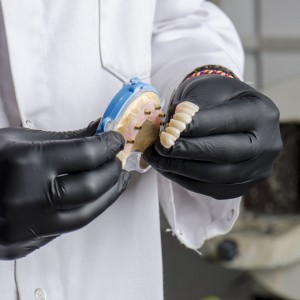
Inlay and Onlay VS Crowns: which guarantees the longest survival?
Simona Chirico
The use of restorative materials to adhere to the dental surfaces and to preserve as much dental tissue as possible, has determined and conditioned the choice of the dentists in rehabilitating teeth with caries or abrasions. We are increasingly opting for partial indirect restorations compared to the total ones, allowing, in this way, to restore not only the functionality of the single element, but also to guarantee aesthetics. But are these types of partial restorations, such as inlays and onlays, as reliable as the classic crowns? What is their survival over time? The study by Vagropoulou et al confirmed that these restorations are as safe as crowns, analyzing the 5-year survival rate.
Materials and methods
An electronic search was performed in various electronic databases to identify articles, published between 1980 and 2017. A total number of 2849 papers were retrieved initially, but only 9 studies were selected for inclusion. The heterogeneity of the studies did allow neither a meta-analysis nor any meaningful comparison between types of restorations or materials. The search terms were splited into 4 groups: inlay, onlay, inlay+onlay, crown. They analyzed the 5-year survival rate and the complications of failure.
Results
The mean survival rate was for:
Inlays: 90.89%
Onlays: 93.5%
Inlay + Onlay: 99.43%
Crowns 95.38%
Statistical analysis demonstrated caries to be the main biological complication for all types of restorations, followed by root fracture and endodontic problems. Ceramic fractures represented the most common technical complication of the material restoration, followed by loss of retention and porcelain chipping.
Conclusion:
The 5-year survival rate for inlays, onlays and crowns is very high, exceeding 90%. So indirect partial restorations are a good alternative for the total ones.
 Related articles
Related articles
Prosthodontics 31 October 2025
Rapid Prototyping Technologies and their Applications in Prosthodontics, a Review of Literature
The early computer-aided design/computer-aided manufacturing (CAD/CAM) systems were relied exclusively on subtractive methods.
Prosthodontics 13 October 2025
Periodontics, implantology, and prosthodontics integrated: the zenith‐driven rehabilitation
A customized treatment plan is important to reach results that will satisfy the patient providing esthetics, function, and long-term stability.
Prosthodontics 26 September 2025
This article aims to review the status, challenges, and directions of environmentally sustainable oral healthcare by focusing on the dental materials and procedures used in prosthodontics.
The concept of the minimal important difference (MID) of an oral health-related quality of life (OHRQoL) questionnaire has been proposed to refer to the smallest OHRQoL score difference considered to...
Prosthodontics 12 August 2025
Previous research regarding dental students has found modest predictive value in preclinical didactic course grades in predicting clinical performance, but systematic assessment of students’...
 Read more
Read more
Much like EMTs rushing to the scene after an accident, stem cells hurry to the site of a skull fracture to start mending the damage. A new finding has uncovered the signaling mechanism that triggers...
Products 05 November 2025
SimplyTest has launched a groundbreaking saliva-based test to detect high-risk strains of oral human papillomavirus (HPV), a major cause of oropharyngeal cancers.
News 05 November 2025
Perimetrics, Inc., a dental technology company pioneering quantitative diagnostics, announced today that the U.S. Food and Drug Administration (FDA) has granted clearance for the InnerView...
News 05 November 2025
On October 15, open enrollment for Medicare began nationwide. Hundreds of thousands of seniors in New Jersey will once again face the challenge of finding the right Medicare coverage, including the...
Digital Dentistry 04 November 2025
Digitalisation is an expanding field in dentistry and implementation of digital teaching methods in dental education is an essential part of modern education.














